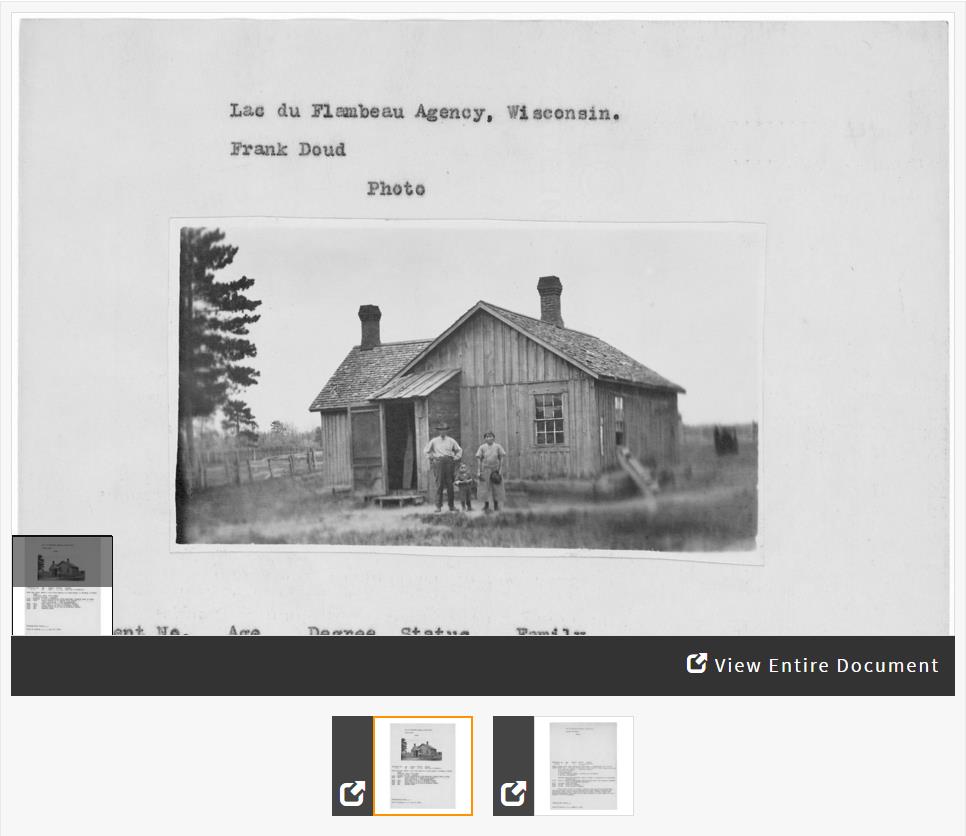In this activity, students will analyze primary sources to determine the role and activities the federal government undertook in an attempt to "Americanize" or assimilate Native Americans.
Suggested Teaching Instructions
Students will analyze two surveys of Lac du Flambeau families determining the similarities and differences and the intention of the Bureau of Indian Affairs government officials that completed the surveys.
Suggested for grades 6-8. Approximate time needed is 20 minutes.
This activity is intended to occur after a class has studied the 1887 Dawes Act, which focused on breaking up reservations by granting land allotments to individual American Indians. Further information about the Dawes Act and ideas for classroom use can be found at
Maps of Indian Territory, the Dawes Act, and Will Rogers' Enrollment Case File. This activity may also fit before or after a lesson that explores assimilation efforts at American Indian boarding schools. Students can work in small groups, or as individuals during this activity.
Ask students to examine each document and hypothesize who was the author of each document.
Reveal to students that the creator of the documents was J.W. Balmer, Superintendent of the Lac du Flambeau agency. Superintendents and agents on Indian reservations worked for the federal government and were responsible for the day-to-day implementation of Indian policy from the central office of the Bureau of Indian Affairs (BIA) in Washington, D.C.
Instruct students to review the documents again, keeping the author in mind. Then respond to the questions on the bottom of the screen in writing or with a partner. Encourage students to share their answers aloud in a full-class discussion about the assimilation efforts of the federal government. Direct students attention to the author’s tone in each document during the class conversation.
Within the course of the class discussion share information found after clicking on "View Entire Document" for each document. If students are completing this on their own computers, reinforce what they have read. Namely that surveys, such as these were taken across the country in the 1920s by order of the Commissioner of Indian Affairs, Charles H. Burke in order to assess Native American families for industriousness, health, education, and living conditions. After the initial survey, individual plans were created to encourage American Indians families "to improve." The BIA would take another survey in four to five years to check on the American Indian progress.





